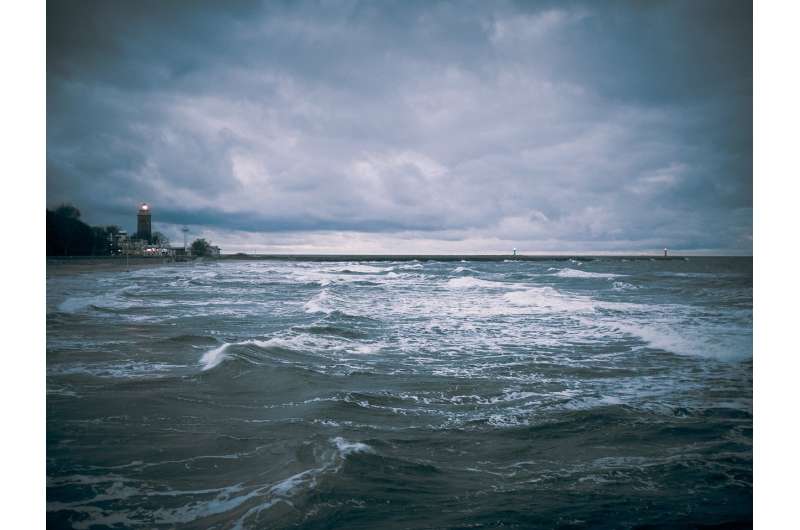Baltic diatoms remained genetically stable for millennia—then humans came into play

Sadie Harley
scientific editor

Robert Egan
associate editor

After humans started using the Baltic Sea, its diatom populations started to experience accelerated—and, so far, irreversible—changes in genetic composition and diversity, according a recent study led by researchers in Konstanz.
Our seas contain countless algae and other microscopic single-cell organisms that photosynthesize. Not only do these phytoplankton form the basis for marine food webs, but, because they produce oxygen and sequester carbon, they also have a major impact on the global climate. Yet, how resilient are phytoplankton to climate events and human influence?
To answer this question, a team of interdisciplinary researchers in the project examined the genetic makeup and diversity of the Baltic diatom species Skeletonema marinoi across the last 8,000 years.
The latest results from a study led by the Environmental Genomics group at the University of Konstanz (Germany), have been published in the journal . They indicate that human activity has a profound impact on the genetic stability of diatom populations.
"Over many thousands of years, the genetic patterns of the diatom populations we studied remained surprisingly stable. It was only after humans began using the Baltic Sea more intensively in the last millennium that we observed more rapid changes in the diatoms' genetic composition," explains Alexandra Schmidt, first author of the study and a postdoctoral researcher in the research team of Laura Epp in the Department of Biology at the University of Konstanz.
This shift is not necessarily negative, but the fact that it has been much faster and more massive shows the impact of human activities. It is unclear whether the populations will ever return to their original genetic state.
Detective work on the sea floor
In order to collect the genetic material of diatoms from the past few thousand years, the research team took sediment cores from the bottom of the Baltic Sea. These cores taken from the Eastern Gotland Basin and the Gulf of Finland are like genetic time capsules.
"In the mud and sand deposits on the sea floor, we find so-called 'ancient DNA," preserved for thousands of years in the sediment, after the death of the organisms," Laura Epp says.
Studying the DNA extracted from individual layers of the core sample makes it possible to follow genetic patterns of the diatom populations over time—the deeper the layer of sediment, the older the genetic material.
From their sediment cores, the research team extracted DNA remains of diatoms from the present up to about 8,000 years ago.
To reliably assess the genetic resilience of the studied species, the team enriched and sequenced diatom DNA of two cell organelles—chloroplasts and mitochondria. These organelles contain particular genomic information, and by comparing this from different layers of the sediment core, researchers can analyze genetic changes in the diatom populations over the entire sample period—the past 8,000 years.
Stable despite climate fluctuations
The results of the study show that the genetic makeup of the diatom populations remained mostly stable over long periods of time. Although there were temporary changes during climate phases such as the Holocene Thermal Maximum (about 6,000–10,000 years ago) or the Late Antique Little Ice Age (about 1,300–1,400 years ago), the genetic composition continually returned to its original state.
It was only in past centuries that remarkably faster and, so far, irreversible changes have taken place in the genetic composition of the diatom populations.
"The changes do not directly coincide with phases of temperature change, but rather with phases of increased human activity in the Baltic Sea—for example, the Viking Age, the Hanseatic period or industrialization," Schmidt explains.
The Baltic Sea populations of diatoms thus showed high genetic resilience over thousands of years, despite natural fluctuations in climate. In historical times, however, changes in the genetic makeup of the populations have accelerated significantly, pointing to human influence.
Potential causes could be increased use of the Baltic Sea and its coastline—as a result of maritime travel, coastline construction or nutrient input from agriculture in the region.
"Human activities can apparently lead to changes in the genetic composition of species that we do not exploit directly in any form. We can now study and discover such effects across thousands of years and use this information to better understand ecological and evolutionary dynamics and develop suitable conservation strategies," Epp concludes.
More information: Alexandra Schmidt et al, Multi‐Millennial Genetic Resilience of Baltic Diatom Populations Disturbed in the Past Centuries, Global Change Biology (2025).
Journal information: Global Change Biology
Provided by University of Konstanz


















